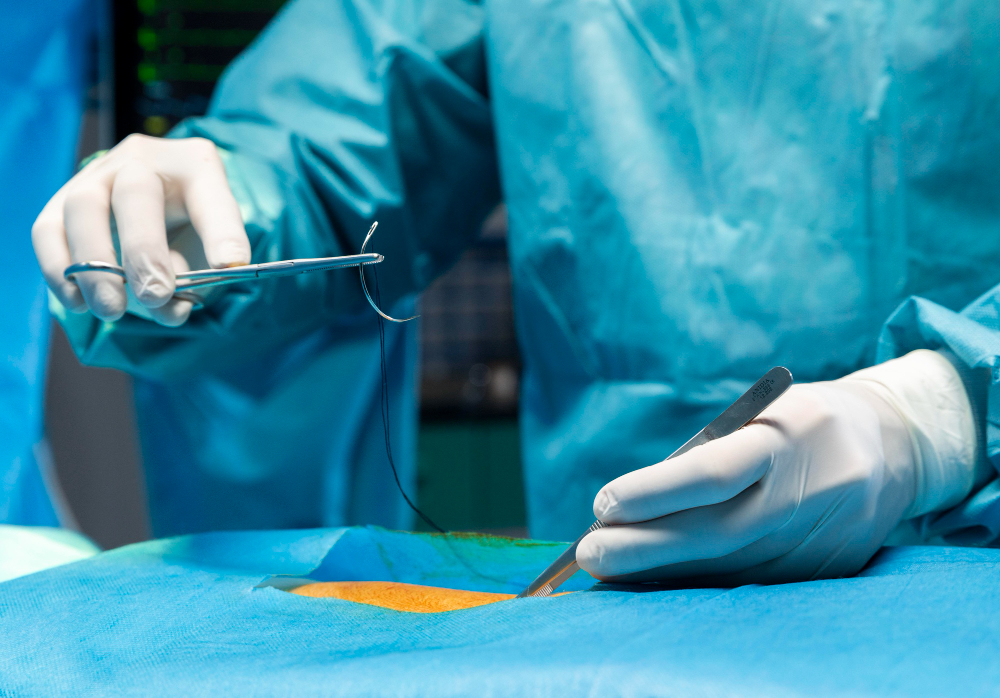Can you ever imagine how surgeons were able to tie knots and suture wounds without the aid of technology?
The history of sutures is one of the most interesting ones that has lasted for thousands of years, envisaging people’s eagerness to apply the best methods of healing. It is about time to immerse into this rather interesting evolution from the times when surgical procedures were carried out using such outdated tools and technologies, to this world that is unthinkable without high-tech solutions of the present day
Ancient Beginnings: How did it all Begin?
In this case, one can just imagine how early healers really struggled to suture their patients’ wounds without obviously modern equipment like surgical scissors. Historically, the use of sutures was a long time ago dating back to the Egyptians and Indians. They used plant fiber, animal sinew, and hair. However, being primitive, such methods were extremely useful in trying to avoid infections and encouraging the process of healing.
The ancient Greeks, particularly Hippocrates, the “father of modern medicine,” even recorded the utilization of sutures in his medical books. Even later, catgut sutures from the animal intestine were mentioned by the Romans’ Galen as a further improvement to medical practice.
In your opinion, do these preceding milestones contribute to the current surgical procedures we use now?

The Middle Ages: What Progress was made?
Thus, entering the Middle Ages, the material and technique of surgical sutures improved. European and Islamic surgeons started testing the use of silk, a material that was relatively strong as well as smooth to both sides enabling the closure of wounds effectively. This period formed the premise to the more advanced form of the interpretations that started in the later centuries.
Think about how the Renaissance has influenced the development of the surgical suture. Surgical instruments and techniques became more advanced and medical practitioners started optimizing sutures, the type of material used, and the methodology of knotting in order to prevent complications.
The 19th Century: On the Origin of Modern Surgical Sutures
The 19th-century proved to be a critical phase in revolutionizing the status of surgical sutures. What changed? Joseph Lister made important changes to the field of surgery presenting the population with sterilization and antiseptic techniques. This led to a decrease of infection from operated areas, hence the enhanced surgeries by sterilization of sutures and surgical instruments.
In the course of this period, surgical sutures began to be manufactured commercially, the use of silk and catgut materials moved to the commercial level. The invention of various types of suture needles also assisted in making suturing accurate as well as efficient. Have you ever wondered how these have affected the effectiveness and safety of procedures being carried out?
20th Century: Medical Innovations That Revolutionized Our World
Throughout the first half of the 20th century, surgical sutures underwent several advancements. New types of thread fabrics, such as nylon, came into the market as better solutions than traditional suture threads available in the market.
The next development was absorbable synthetic sutures, whose products include polyglycolic acid (PGA), polydioxanone (PDO), and other related products that are biodegradable. It also eliminated the need for suture removal, and improved the degree of skin healing, making the patient more comfortable.
The Modern Era: Looking Ahead to New Advancements in Sutures
Surgical sutures in the recent past have remained a topic for improvement due to the desire to achieve even better prognosis. The far-reaching contributions include such innovations as barbed sutures, which do not need to be tied and significantly save time during an operation. They are especially prominent in cosmetic surgery and other minor operations.
One innovation worth mentioning is the incorporation of tails in sutures that release antimicrobial substances to reduce bacterial proliferation. These sutures are vital in decreasing surgical site infections, which are a major issue in healthcare today.
At the same time, biodegradable sutures produced from materials such as polylactic acid (PLA) are gradually gaining popularity. They are ecologically friendly and dissolve in the body, minimizing the need for follow-up procedures that may be inconsequential to the patient’s healing process. It is important to consider how these advancements will contribute to the future of surgery.
Looking Ahead: What is Ahead in the Future?
In essence, the future of surgical sutures is very bright. Ongoing studies involve using smart sutures with sensors and even micro cameras to ensure that wounds heal and detect signs of infection in real-time. Furthermore, the dream of a life where internal stitches would be intelligent and inform the doctor of any looming fatal issues is on the horizon.
Conclusion: An enlightening journey through the ages
It is more than a discourse on the chronology of healthcare improvements; it is an account of innovation and the desire to change patients’ lives for the better. Beginning with the rudimentary techniques of antiquity to the present day’s technological conquests, surgical sutures have been a force for life and medical advancement.
As we continue to push the boundaries of innovation, one thing is clear: surgical sutures will continue to be a fundamental practice in the contemporary practice of medicine as society’s requirements and the medical field’s development progress.


